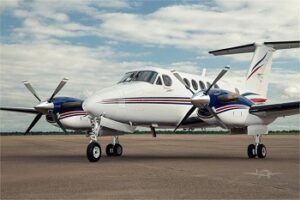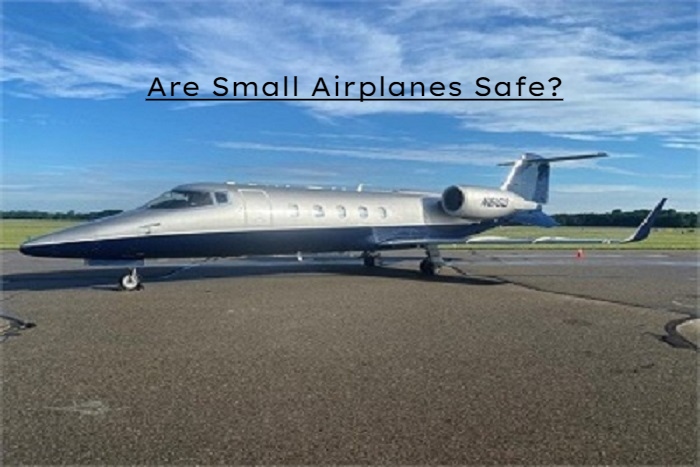
Throughout the years I have been asked the question “Are Small Airplanes Safe?
If you simply look at the statistics for small airplane accidents you will definitely see accident rates in these types of airplanes are much higher.
Considering that the airlines last year had zero fatalities it is pretty obvious that the small airplane general aviation group is excessive. One fatality is too high.
But why are these numbers so significantly different?
In this article let’s discuss some of the reasons why smaller planes have such incredible numbers when it comes to accidents.
“Aviation in itself is not inherently dangerous but it is totally unforgiving of any inadequacy inability or neglect.” (unknown)
“Are Small Airplanes Safe?”
The answer is yes small airplanes are safe. If you look at the statistics of accidents you will see that the majority of those accidents are pilot error. Not the airplane.
1. Pilot Training
Airline pilots receive the best training available. These pilots are scrutinized every six months for their proficiency in the aircraft, their knowledge of the aircraft systems, and their physical and mental well being,
Training is only as good as the teacher.
For me to say that FAR Part 121 instructors are better than Part 135 or Part 91 instructors I cannot and will not differentiate.
Having served in all of those groups I will say that they are nearly equivalent.
Training is rigorous.
You don’t get away with just a so-so performance. It is either up to standards or you’re gone.
Or you will quit of your own accord.
Training at a local flight school might not be as rigorous but it certainly should be every bit as rigorous.
I have known some flight instructors that I would not consider the best pilots much less good instructors.
I have worked with some of the best as well.
So perhaps some flight training is lacking and the safety of the pilots and maintenance of the aircraft may become substandard.
I would certainly hope that is never the case.
2. Aircraft Maintenance
Maintenance on civilian aircraft must be performed by a certified maintenance facility or by a properly licensed A&P (Airframe and Powerplant) mechanic.
Maintenance on small aircraft must be performed to the same standards as an aircraft owned by an airline.
Every private airplane must undergo a rigorous annual inspection and any scheduled maintenance.
It is up to the owner to see that it is accomplished.
It is also the responsibility of the pilot to assure that the aircraft is in airworthy condition before each and every flight.
That includes the logs.
The aircraft logbooks are required to be readily available to the pilots so they can be inspected.
The avionics and equipment must be in operating order unless they are not essential for flight.
If any equipment or radio is inoperable it must be placarded as such. Again it is always the responsibility of the pilot to be sure of a safe outcome of the flight.
3. Rules and Regulations
The FAR’s, (Federal Aviation Regulations), specify what “privileges” each certificate holder has.
These rules are taken very seriously by the majority of pilots. in my opinion.
I certainly did because I discovered very early on just how dangerous an airplane can be.
I learned to respect the fact that you can be in serious trouble very fast. And very much alone.
Early on in my first year of having my Private Pilot License, I found myself surrounded by towering Cumulus clouds that were climbing far faster than a 182 Cessna could climb.
I was lucky enough to find a hole and I was able to descend below the clouds to safety.
I broke a lot of rules that day and it was all about not thinking.
It was time for me to go back to school and get the Instrument rating and not become a loss of control statistic and very dead.
5. Qualifications
The qualifications for acquiring a Private Pilot License are a minimum of 40 hours of flight time.
This includes 3 hours of flight solely by instruments.
These three hours are just to familiarize a student with flying solely by instruments and by no means enough to fly in inclement weather.
A brand new Private Pilot Certificate is a license to learn and the hours that you fly are experience hours.
Building hours of experience are what creates a good safe pilot.
Once you have your Private license you can start on an instrument rating where you will learn the basics of instrument flight.
That’s a great place to add to the 240 hours needed for the Commercial Pilot Certificate.
Once you have the instrument rating you have the opportunity to sharpen your skills and build confidence.
Know your limitations and remember that you will always be a student of aviation.
You can read all pilot qualifications here.
6. Media Hype
Each general aviation accident attracts the attention of the media and it is usually always a very limited biased point of view.
I have always felt that the media adds to the fear factor that many people have towards flying in small aircraft.
I had a former WW2 P51 pilot, George Roberts (a great friend and pilot), who always referred to airliners as “crowd killers” And he was right.
The actual accident events are tragic ways to expand our knowledge about things that each of us as pilots can learn to avoid.
Conclusion
Having years of experience flying small aircraft I will say that without question small aircraft are very safe.
Most are designed to fly in the lower altitudes, with the exception of private jets, where the majority of adverse weather exists.
Throughout my career, I was honored to fly with and train pilots in all types of weather.
If I could change anything about pilot certification I would recommend that every pilot have training in real-world weather.
In my capacity as a company training Captain and Check Airman, I was afforded the opportunity to train in the real world.
Many of the pilots that I flew with are now major airline Captains and I am pleased to report that none of the many pilots I flew with ever had a fatal accident.
This is not to say that I am an exceptional pilot or instructor, but to bring light to the training in very adverse weather.
In closing, I recently received a phone call from a previous FO I flew with many years back who called to tell me that he still recalls his prior training.
He is a current Senior Captain for Southwest Airlines and had just flown two missed approaches into Burbank CA, airport and had diverted to San Diego.
Let’s all live to fly another day!
